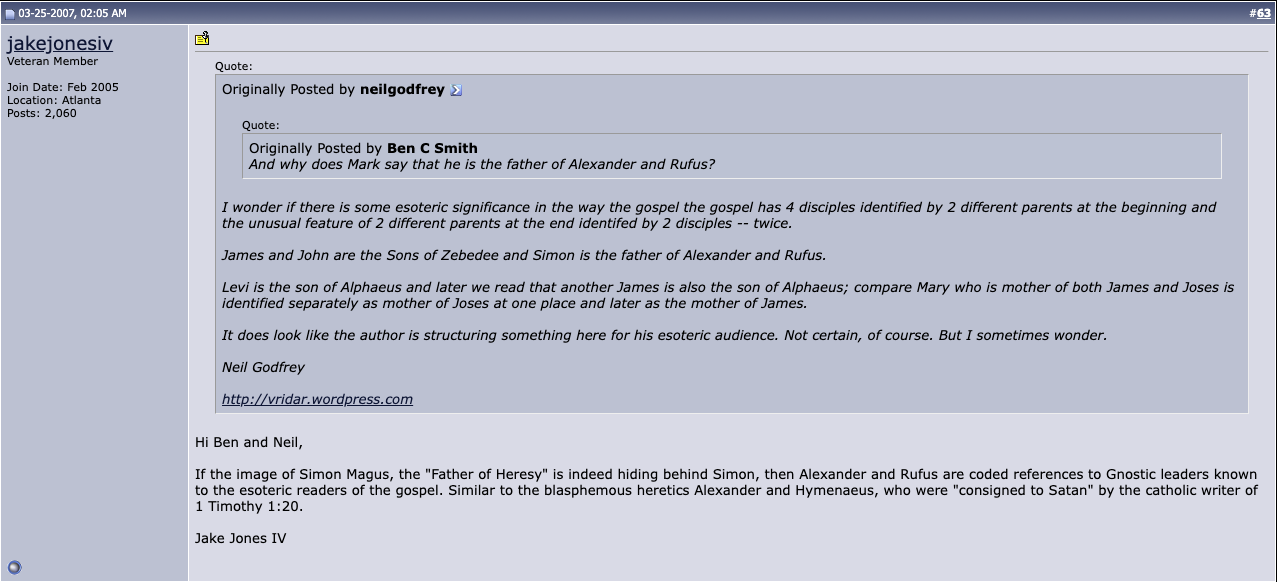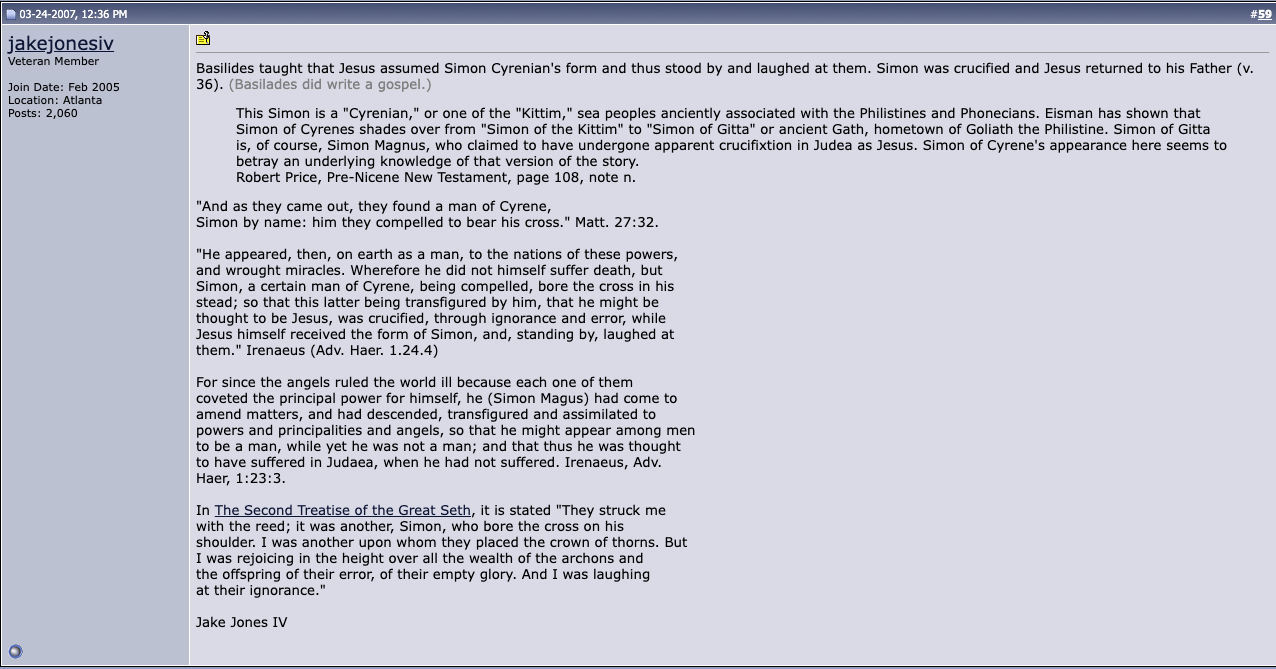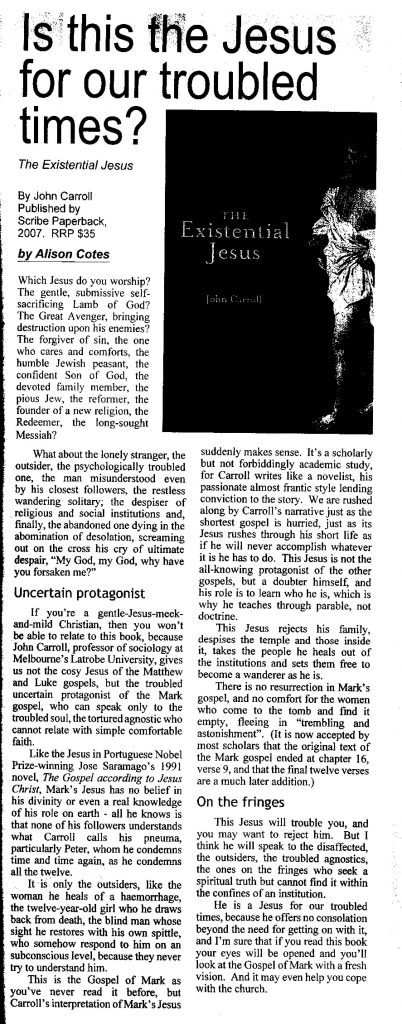16. Papias on John
A second (hitherto unknown) inner circle
In this chapter Bauckham argues that the author of the Gospel of John was John the Elder, and that it was this John who was the Beloved Disciple (BD). He begins by comparing the Synoptic “sources” with John’s. He reminds us that it was Peter, James and John (the Sons of Zebedee) who were the inner circle in the Synoptic Gospels, and that it was the Twelve who were the eyewitness authorities behind Mark’s gospel, first of the Synoptics. In the Gospel of John, on the other hand, we find that the synoptic trio of Peter, James and John, no longer occupy such a privileged place. They have been replaced, argues B, by the BD. But the BD is not alone. He is part of another circle, Continue reading “Bauckham’s Jesus and the Eyewitnesses. Chapter 16”
Like this:
Like Loading...



